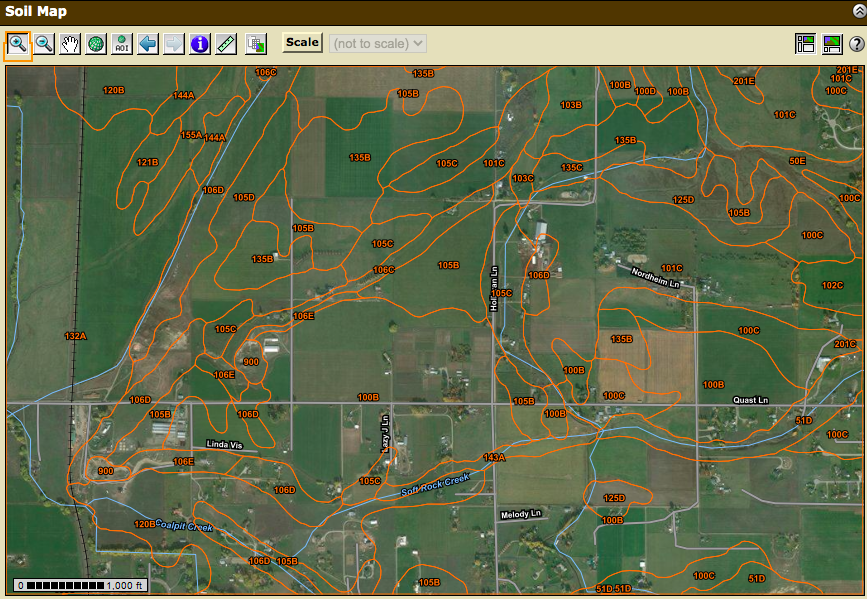Preparing the Soil
Ideally, you will start preparing the chosen area for your vineyard the season before any vines go into the ground, especially if you’re planting in a particularly weedy or nutrient deficient soil. Many soil issues can be more easily addressed before planting, particularly soil pH, organic matter, hard pans (impermeable shallow layers that will prevent drainage), and nutrients that are less water soluble, like Phosphorus and Potassium.

Snapshot example of the data you can collect from the NRCS's Web Soil Survey tool.
At minimum, research the soil type of your area through the USDA (NRCS) Web Soil Survey app, which can tell you general information about surveyed areas. Ideally, though, you should also take soil samples from a couple different locations in your chosen area to be analyzed by a lab, which will give you detailed information about the pH and nutrient density of your particular area’s soil. When submitting samples, be sure to send your samples into a reputable lab, like Agvise or Midwest Labs, and request results for the following (at minimum):
- Soil pH
- Organic matter
- Phosphorus (P)
- Potassium (K)
- Nitrogen (N)
- Magnesium (Mg)
- Zinc (Zn)
- Boron (B)
After you receive your results from the lab, you can then start amending the soil to correct for any pH imbalances or nutrient deficiencies in the seasons leading up to planting, which will help ensure your soil can provide adequate nutrients for your young vines the following Spring. You can find more information regarding soil amendments and fertility post-planting in this guide’s fertility section.
If you’re looking for more advanced guides to soil fertility and nutrition (and many other topics), we highly recommend either of the following resources:
- Growing Grapes in Minnesota from the Minnesota Grape Growers Association in conjunction with the University of Minnesota;
- New Vineyard Timeline from Cornell University’s Cooperative Extension’s Lake Erie Regional Grape Program.

